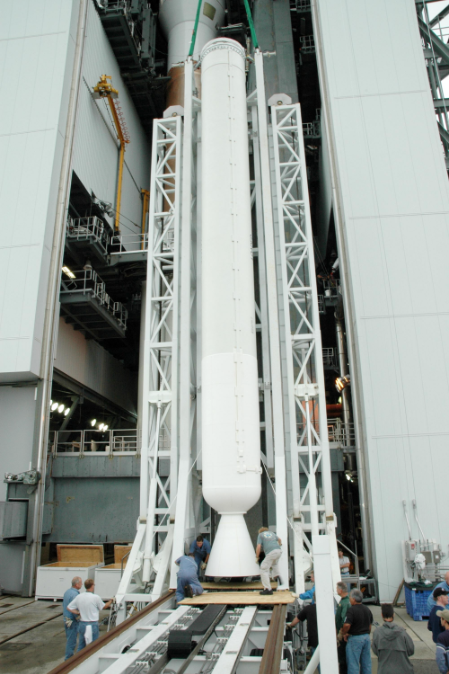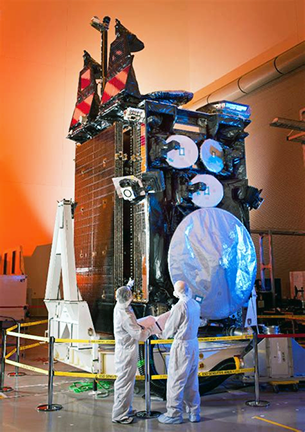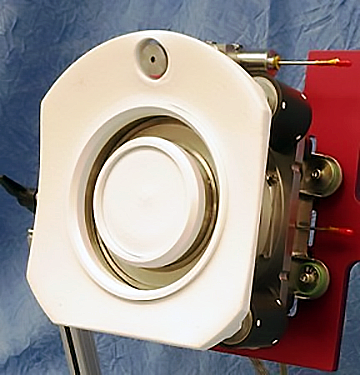
Another successful ULA launch and yet another rocket successfully powered by Aerojet Rocketdyne ... and add to that the satellite onboard is also powered chemically and electrically by Aerojet Rocketdyne.

Aerojet's mighty rocket, AJ-60A.
Aerojet Rocketdyne propulsion continues to support the Air Force’s protected communications satellite network, the Advanced Extremely High Frequency (AEHF) system, with the successful launch of the fourth satellite of its constellation on October 17. This fourth satellite 'rounds out the backbone' of the network, which will later gain another two satellites to complete the six-satellite system.

U.S.A.F's AEHF-4 satellite. Image is courtesy of the satellite manufacturer, Lockheed Martin.
The chemical and electric propulsion onboard the AEHF satellites provide the capabilities of: orbit raising, stationkeeping, attitude control, and repositioning capabilities. The electric propulsion used, when compared to all chemical propulsion, results in a savings of more than 2,000 lbs. of propellant, reducing launch costs.
According to Lockheed Martin Space's statement, “the AEHF satellite system delivers global connectivity and protected communications to national leaders and armed forces, 24 hours a day, through a secure constellation. Satellites are jam-resistant, highly-survivable and allow for critical information to be transmitted on ground, air and sea platforms.”
Aerojet Rocketdyne CEO and President Eileen Drake added that seamless and secure communication is vital to the effectiveness and safety of our servicemen and women across the globe. Aerojet Rocketdyne plays a critical role in supporting the Air Force’s communications network, from helping launch the satellites into Geostationary Earth orbit, to providing mission-enabling propulsion capabilities onboard the satellites throughout the mission.

Aerojet Rocketdyne Hall thruster.
Aerojet Rocketdyne supports the AEHF-4 mission from the launch pad to orbit to final end-of-life decommissioning of the satellite. Starting with the launch vehicle – Aerojet Rocketdyne provides the AJ-60A solid rocket motors that helped boost United Launch Alliance’s Atlas V off the launch pad; the pressure vessels that support the first and second stages of the launch vehicle; the RL10 liquid hydrogen/liquid oxygen engine that provides thrust to power the Centaur upper stage, and MR-106 Reaction Control System thrusters, which provide pitch, yaw and roll control for the Centaur upper stage, as well as settling burns.
Onboard the AEHF-4 space vehicle, Aerojet Rocketdyne provides electric XR-5 Hall Thruster strings and monopropellant rocket engines which enable nearly all propulsive functions throughout the life of the satellite. One XR-5 Hall Thruster string consists of an XR-5 Hall Thruster, a xenon flow controller (XFC) and the power processor that drives and controls the thruster and XFC. The XR-5 Hall Thrusters on AEHF enable a propellant mass savings in excess of 2,000 lbs. when compared to performing the mission with all chemical propulsion.
The five AJ-60A solid rocket booster motors that supported the mission were designed and built at the company’s facility in Sacramento, California, while the company’s facility located in West Palm Beach, Florida, provides the RL10 engine. Aerojet Rocketdyne’s Redmond facility developed and manufactured the electric and chemical thrusters on the space vehicle, as well as the reaction control thrusters on the Centaur upper stage. Pressure vessels for the Atlas V were manufactured by ARDÉ, a subsidiary of Aerojet Rocketdyne, based in New Jersey.

